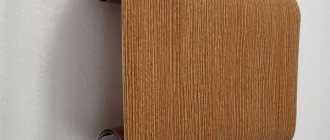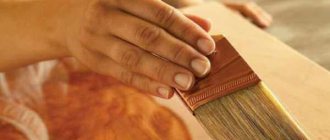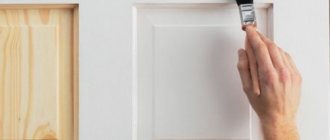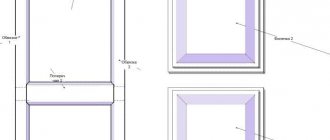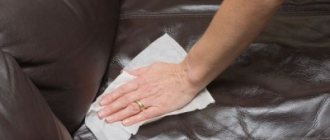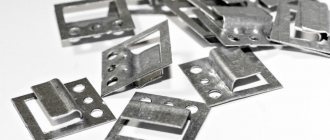Wooden doors bring a special charm to the interior, but only if they look decent and the paint is applied carefully.
Cracks in the paintwork, faded shade and peeling paint on the doors can ruin the entire impression of the room.
There is a need to remove old paint. For this purpose, proven chemical, thermal and mechanical methods are used.
We'll tell you more about how to remove old paint from a wooden door in this article.
Should I delete it?
When choosing a method for removing old paint, the question may arise: does it need to be removed at all? The answer to this question and the choice of coating removal method depend on the following factors:
- door surface type;
- condition of the coating;
- type of paint used;
- adhesion strength of the coating to wood;
- thickness and number of layers.
The most difficult thing will be to remove the layer of paint coating, which has good adhesion to the material, and the door itself has a complex surface topography and a lot of decorative elements.
If the door is designed for subsequent painting, then,
depending on the condition of the coating, you can get by with sanding it with sandpaper .
This is possible when the paint was applied carefully in one layer and does not contain peeling or chipping. The old coating is simply treated with sandpaper, and a new layer can be applied. Old layers of paint that, due to atmospheric influences and time, have significant defects (chips, cracks, swelling) will have to be removed. It is also necessary to remove too thick a layer of paintwork that has hardened streaks and other results of careless handling of the door in the past.
It happens that new door paint is incompatible with the old one. This is also a reason to completely remove paint from wooden doors.
Painting a metal door
Entrance doors have a large surface area, so they are preferably painted using a spray gun or a roller. Painting begins from the top, moving down and trying not to go into the painted layers. After 15-20 minutes, light and unpainted areas are re-painted. If drips appear during painting and have dried, they are protected with sandpaper after the surface has completely dried and the entire surface is repainted. The loops are also painted in the desired color. Since the paint has a strong chemical smell that does not disappear for a long time, painting a metal product is done on the street or in a utility room with open doors and windows.
Attention!
Do not apply painting in rainy weather or frost. With high humidity, there is no strong adhesion of the paint to the product, and in the cold the paint thickens and does not adhere well to the surface.
To avoid unpleasant surprises, experts advise using new paint of the same brand, even if the old coating is completely removed. In this case, the owners will avoid possible problems in the form of small blisters of paint in different places. Then the updated product will not stand out as an unsightly stain against the background of a fresh renovation.
';document.body.appendChild(d);document.pnctLoadStarted=(new%20Date()).getTime();document.pnctCnclLoad=function(){document.pnctLoadStarted=0;pl=document.getElementById('pnctPreloader' );if(pl)pl.parentNode.removeChild(pl)};document.getElementById('pnctCancelBtn').addEventListener('click',function(e){e.preventDefault();document.pnctCnclLoad()}); setTimeout(function(){var%20st=document.pnctLoadStarted;if(st>0&&((new%20Date()).getTime()-st>=14000)){document.pnctCnclLoad();alert('%3C %3F%3DYii%3A%3At%28%22uniprogy%22%2C+%22Unfortunately%2C+the+image+search+is+not+available.%22%29%3F%3E')}},15000);var %20e=document.createElement('script');e.setAttribute('type','text/javascript');e.setAttribute('charset','UTF-8′);e.setAttribute('src', '//postila.ru/post.js?ver=1&m=b&rnd='+Math.random()*99999999);document.body.appendChild(e)})());">
Preparatory work
Preliminary preparation of the door requires cleaning it from dust and dirt. also necessary to clean off the swollen layers that have separated from the base. If one of the sides will be hidden in the future, for example, by leatherette upholstery, you don’t have to carefully remove the paint - just clean off the peeling.
Having decided on the nature and scope of work, you should select tools for removing paintwork.
You will definitely need:
- rags;
- putty knife;
- personal protective equipment (respirator, special glasses, gloves).
For the chemical method, you will need reagents, a bucket of water, and a brush for applying a special composition. The mechanical and thermal methods will require a special tool (grinding device, drill with attachments, industrial hair dryer).
Heat treatment
To clean wood, you can heat it. As a result, the paint material will adhere to the base much worse. Cracks will appear on the coating, and it can be removed using a special tool (spatula, chisel).
When carrying out heat treatment, there are several important points to consider.
- If the coating begins to char instead of peeling off, the cleaning method will have to be changed. In this case, you can use chemicals.
- Goggles and protective gloves must be used. Also, thorough ventilation is required during and after work. When varnish heats up, it can release substances that are hazardous to human health. It is also worth considering that pieces of paint and varnish material may bounce off the base. You should also remember about fire safety.
The work may require special equipment.
Construction hairdryer. Such a device can heat surfaces much more than a conventional household appliance.
Gas or gasoline burner. The price for such devices is quite reasonable
However, it should be borne in mind that you need to work with the burner as carefully as possible, otherwise you can be seriously injured.
Heat treatment has one important advantage - the work is carried out very quickly. However, the varnished base should not be allowed to overheat, otherwise a fire may occur.
You should work using both hands. One needs to hold the device, the second - a spatula, with which you will remove the paintwork.
See below for a master class on removing varnish from a wooden surface.
How to clean at home?
To remove old paint from wooden doors, one of three methods is used:
- Mechanical impact.
- Use of chemical reagents.
- Exposure to high temperatures.
Each option has its own strengths and weaknesses. Depending on the specific situation, a suitable method, appropriate instrument and preparations are selected.
Thermal methods
The thermal method of cleaning a wooden door from paint involves using an industrial hair dryer and a spatula.
Work order:
- Plug in the hair dryer.
- Direct a stream of hot air at the door area.
- When heated, the paint will begin to swell and come off, making it easier to scrape off with a spatula.
- The processing process is repeated in the next zone.
After the entire door has been processed, it is necessary to finalize the missing fragments. The surface is cleaned with sandpaper.
If you don’t have an industrial hair dryer, you can use an iron, first placing foil between the sole of the device and the door.
Advantages of the method:
- environmental friendliness;
- no extensive experience required.
Flaws:
- it is necessary to use a special tool;
- it is not always possible to use on difficult surfaces;
- there is a possibility of damage to the wood if the temperature setting is incorrect;
- may require modification.
How to clean a surface mechanically?
The mechanical method involves removing a layer of paint using tools: from a regular spatula to a drill with attachments and other special equipment. Using a power tool speeds up the process, but may not be able to handle difficult areas.
Disadvantages of the method:
- dust formation;
- high probability of physical damage to the surface;
- need a tool;
- the need to use protective equipment.
Advantages:
- environmental friendliness;
- Having a good tool speeds up the process.
Suitable paint stripping tools include:
| Tool | Features of application |
| Scrapers or cycles | For a flat surface |
| Angle grinder | Gives a rough finish, provides access to corners |
| Belt sander | Removing paint from hard-to-reach places |
| Vibratory grinding machine | Delicate processing, removing a thin layer of coating |
| Grinder with brushes | Universal processing |
Removing a multi-layer coating using only sandpaper or a spatula is labor-intensive and ineffective.
The best solution to the problem is to choose a chemical method or use a power tool.
How to clean with chemicals?
Chemical washing is carried out using solvents. The technology is based on the destruction of the structure of the dye itself by chemicals:
- The solution is applied to the surface with a brush.
- Maintain the required time, which depends on the composition and type of paint.
- Using a spatula or scraper, remove the coating that has swollen under the influence of the reagents.
- Clean off any remaining paint.
If the instructions for the wash indicate that the surface needs additional wiping with white spirit or another solvent, this must be done.
Advantages of the method:
- speed of action of the chemical composition;
- ease of use;
- no excessive effort required;
- no special skills required.
Flaws:
- toxicity of chemicals;
- an allergic reaction is possible;
- mandatory availability of personal protective equipment;
- the need to organize good ventilation during the application of products;
- acrid odor;
- Solvents require special disposal.
Despite the fairly high efficiency, the use of chemicals often requires surface finishing mechanically.
Before using a solvent, it is important to clarify whether it is suitable for a particular type of paint, and whether the condition of the wood allows this cleaning method to be used.
The selection of the reagent should take into account the type of wood and the condition of the material . Rotten wood may not withstand intense chemical exposure.
How to remove old paint from a door: tips, removal secrets, instructions
During renovation work, it often turns out that the old door does not suit the new environment either in style or color. But it does not always require replacement. If the canvas is made soundly and of high quality, there is no need to get rid of an expensive item and spend money on purchasing a new one, but only carry out procedures to clean it and prepare it for new painting. In this case, they take into account the material from which the doors are made, the depth of penetration of the old paint layer into the canvas, and the number of layers.
How to avoid damaging the door leaf?
The wooden surface has a characteristic texture and is susceptible to harsh mechanical stress.
When working with natural materials, the following points should be taken into account:
the spatula should be directed at an angle to the surface;- movements should be in the direction of the fibers;
- to process difficult areas, it is necessary to use a special tool with a wedge-shaped nozzle;
- Particular care should be taken when working with soft wood, as well as with decorative elements that are milled.
In addition to updating the paint, you should pay attention to the condition of the fittings. If necessary, replace or restore metal elements.
Use of chemistry
The composition is used as follows:
- Open all doors and windows. Air must constantly flow into the room.
- All surfaces not to be treated are covered with plastic film. If liquid gets on furniture or the floor, it will cause stains.
- Pour the product into a separate container. Dip a brush or roller into the composition. The tool is selected taking into account the consistency of the wash. The roller is rolled over a perforated tray.
- Apply the solvent to the base to be treated. Wait until the coloring composition dissolves. The procedure takes 10-30 minutes.
- Remove the dissolved material with a metal tool. If necessary, the liquid is reapplied.
When choosing a wash, consider the following points:
- Gel formulations are more expensive than liquid formulations. However, the thick consistency provides faster results.
- When working in a room with poor ventilation, use the least aggressive compounds. Working with them takes a lot of time, but the possibility of poisoning is eliminated.
- It is not recommended to use inexpensive domestically produced solvents. A multi-layer oil coating cannot be removed with such a remover. Foreign-made equipment copes with the task faster.
- Some washes contribute to the darkening of the treated base. If it is impossible to refuse their use, the wood is bleached with chlorine.
You can remove old paint with caustic soda. The substance is dissolved in a small amount of water to the consistency of thick sour cream. Ground oatmeal is added to the mixture. The resulting paste is spread over the surface. When the paint swells, it is cleaned off with a spatula. Before further processing, the base is degreased.
Heating
Under the influence of heat treatment, the old paint heats up, foams and is easily removed with a scraper or spatula.
Sometimes you can use a hair dryer. It can easily heat the coating to very high temperatures. But this device cannot be used in a room with plastic windows and exposed electrical wiring, as they may catch fire.
If a hair dryer is not available in your apartment, you can apply food foil to the surface to be cleaned and iron it with a heated iron. For this purpose, it is worth using an old iron, as its coating may be damaged by the foil.
It is strictly not recommended to use open fire, including gas burners. This is due to the risk of the wooden surface catching fire. Even if the tree does not catch fire, its condition may be irrevocably damaged. After all, fire causes wood to dry out. And some rocks emit resin that can easily flare up from a fire source. After this, a film will form on the wooden surface, which will interfere with new painting.
Helpful Tips:
- What base your new paint will be on is not only your choice, but also your previous choice of material. If you used an oil-based solution, then you shouldn’t take risks - you need to use just such a base. In the varieties of paints, there is incompatibility of one or another base. And when painting with a different composition, your door will appear with pimples.
- When purchasing varnish or paint for a restored door, choose paint cans of the same serial number to avoid discrepancies in the color palette.
Consumables
Rags for removing dust, polyethylene to protect furniture and other objects, tape - it’s difficult to immediately say why it might be needed, but it’s a fact that it’s useful for something.
There are various removers available for old paint. Try to determine the type of paint and varnish material and select the appropriate chemistry.
Heating
Under the influence of heat treatment, the old paint heats up, foams and is easily removed with a scraper or spatula.
Sometimes you can use a hair dryer. It can easily heat the coating to very high temperatures. But this device cannot be used in a room with plastic windows and exposed electrical wiring, as they may catch fire.
If a hair dryer is not available in your apartment, you can apply food foil to the surface to be cleaned and iron it with a heated iron. For this purpose, it is worth using an old iron, as its coating may be damaged by the foil.
It is strictly not recommended to use open fire, including gas burners. This is due to the risk of the wooden surface catching fire. Even if the tree does not catch fire, its condition may be irrevocably damaged. After all, fire causes wood to dry out. And some rocks emit resin that can easily flare up from a fire source. After this, a film will form on the wooden surface, which will interfere with new painting.
Effective nail polish removal methods
You can use one of several effective methods; the main condition for success is the efficiency of the work and accuracy. Here is a list of the most effective and popular ways to remove old varnish from wooden furniture:
- application of chemical solutions;
- mechanical method;
- heat treatment;
- removing nail polish with water.
Removing varnish with chemical compounds
Using a chemical solution, you can quickly remove varnish from furniture at home.
It is important to remember that you can start working with chemicals only in a protective cotton suit, which will protect the skin from contact with aggressive chemical compounds. In addition, you must wear goggles and a mask, and protect your hands with rubber gloves to avoid chemical burns.
Many people are interested in how to remove varnish from old furniture using chemicals? Specialized stores today sell a special mixture called wash. Most often it takes the form of a liquid mixture or powder; when applied, the composition begins to corrode the paintwork material, which has several layers. It is necessary to adhere to the following stages of work to quickly remove varnish from any wooden furniture:
- Preparation of the composition. The chemical mixture must be diluted with water in accordance with the attached instructions. To obtain a homogeneous and thick mass, you need to mix all the ingredients that make up the product. By purchasing a gel remover, you can be sure that it will stick even on a vertical surface.
- If the product is already ready for use, then it must be applied to the surface. Typically this paste-like substance is applied with a brush. To quickly remove varnish from furniture at home, you need to apply the mixture in a thick layer, movements should be carried out in one direction in order to treat the entire area at a time.
- After applying the chemical composition, a special film is applied. Thanks to it, the effect when removing varnish from furniture will be significantly enhanced. You just need to take a cellophane film and cover it over the area treated with the remover. The film should remain on the surface of the furniture for no longer than one hour. Chem. The product should remain on the structure for approximately 3-4 hours, in accordance with the instructions. In different cases, it takes different amounts of time to remove old varnish from furniture. It takes much longer to remove a thick layer of varnish than to remove a thin coating. When a dark brown color of the mixture appears under the film, this indicates that it is time to remove the film. The old varnish should swell under the remover.
- At this stage you need to remove the varnish from the furniture. If all previous procedures were performed correctly, then removing the paintwork material will be very easy and simple. You can use a regular spatula to remove the remover along with the varnish. After processing with a spatula, you need to use sandpaper to sand the wood base. Thanks to this, all particles of material will be completely removed. So, chemical remover is a very simple way to remove old varnish from furniture.
To completely clean the surface of the furniture, you must remove the remover at the end. This usually requires half a liter or a liter of plain water. You need to dissolve 100-200 grams of vinegar in 1 liter of water. A soft sponge is dipped into this mixture and the furniture surface is washed with it. This method allows you to remove the product very quickly. At the end, the wood is wiped with a flannel rag, and the furniture is taken outside for airing.
Mechanical method
There are two mechanical treatment options that allow you to remove the old varnish coating:
- Use fine-grained sandpaper or a brush with stiff steel bristles. Circular movements allow you to remove the old coating without any problems. This method is especially suitable when the material peels off in fragments. In hard-to-reach places, you can use a spatula or a flat-head screwdriver.
- If the varnish holds very firmly, and the previous method did not produce results, then you can use an electric eccentric grinder. This power tool allows you to remove varnish from any surface. In addition, hard sandpaper is used. Before starting this treatment, you need to put on goggles, gloves and a respirator. First, sandpaper with a grain size of 80-120 is inserted into the sanding machine. After careful processing, sandpaper with 180 grit is installed. In the end, a perfectly smooth surface is obtained, but you need to make sure that there are no varnish particles left.
Removal Methods Not Recommended
Some craftsmen use a thermal method to remove old coating by exposing the treated area of the product to open fire. Using this method is highly discouraged due to the increased risk of possible fire.
In addition, when processing products from various types of wood using this method, the material dries out and its internal structure is damaged, which significantly reduces the strength of the product and its service life.
Some types of wood during this treatment can release resins that are easily flammable or create a film on the product. This film will significantly reduce adhesion, and may even prevent you from applying a new layer to the surface.
When choosing methods for removing old coating, the main thing is to follow the rules of personal safety, use protective equipment and follow safety precautions when working with electrical appliances.
Safety precautions
Removing paint from the floor is not too difficult, but when carrying out this work, certain rules must be followed:
Use heating devices with extreme caution, avoiding burning and inhaling vapors generated during heating of varnish and paint, while wearing a respirator. In addition to the latter, when using any of the methods, it is necessary to use other personal protective equipment that will prevent damage from vapors and dust not only to the respiratory tract, but also to the skin of the hands, wearing rubber gloves and goggles for this, which will provide protection to the eyes. Be sure to follow the instructions for using chemical compounds and tools. Before treating the floor covering with the chosen method, you must first test it on a small and less noticeable area, since in some situations any of the methods may be ineffective or ineffective. If you follow all these recommendations, you will be able to avoid many negative consequences
If you follow all these recommendations, you will be able to avoid many negative consequences.
